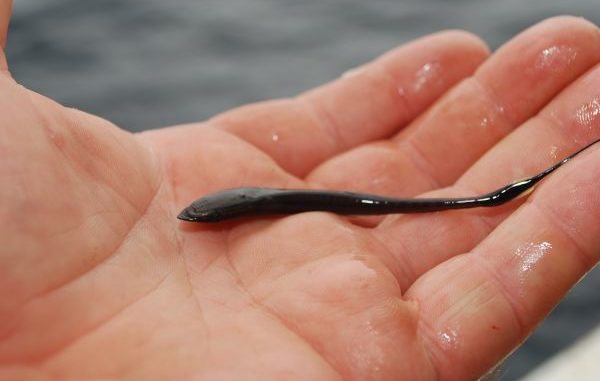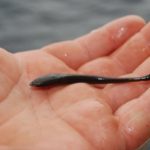
Gulf of Mexico home to eight remora species
Every fish makes its own living in its own way. Some are hard-swimming, driving predators. Others are kind of laid back and take advantage of their fellow fish in the sea.
The family of fish called remoras or sharksuckers is in the latter group.
They latch onto another fish (or other sea creature) with a sucker disc located on top of their heads and hitch free rides. When they see a chance to feed, they unhook, grab a bite and then suck back onto their hard-working host to continue the free ride.
Eight species belong to the family Echeneidae worldwide, and all eight are found in the Gulf of Mexico. What they have in common is a dorsal (back) fin that has been modified to a sucker-like disc that resembles the sole of a sneaker. The sucker disc is used by the fish to attach themselves to larger marine life, essentially hitch-hiking on the swimming effort of their host.
The most-common species seen by recreational fishermen are the sharksucker (Echeneis naucrates) and the whitefin sharksucker (E. neucratoides). Unlike some of other family members, which are picky about who they attach themselves to, these species can be seen on a wide variety of fish, turtles, and even boats and humans, as well as sharks.
Both grow to over 30 inches long, and both will take a baited hook if they see the opportunity.
They can be identified by having a broad, black band trimmed on each side by lighter bands that run the length of the fish. The whitefin suckerfish, true to its name, has noticeable white margins on its tail fin.
The rare slender suckerfish (Phtheirichthyes lineatus) is a streamlined fish marked by an obscure dark band down each side. Its most-usual host is the great barracuda, and it has the interesting habit of sometimes attaching itself inside the mouth of its host. It is also found on sea turtles.
The other five species have short, stout bodies, and four have brown to dark-brown bodies.
The whalesucker (Remora australis) attaches itself only to whales and porpoises. The spearfish remora (R. brachyptera) attaches to swordfish, ocean sunfish and marlins.
The marlinsucker (R. osteochir) hooks up with marlins, sailfishes, spearfishes and wahoo. The remora (R. remora) attaches itself to sharks.
The last species, which is pale gray to bluish-white in contrast to its four brown relatives, is the white suckerfish (Remorina albescens). It attaches itself to sharks, and in the Indian and Pacific oceans to black marlins.
A good deal of mythology surrounds sharksuckers and remoras, and some it is reflected in their scientific names.
In Latin, the name remora means “delay.” The genus name Echeneis is derived from the Greek words “echein,” which means “to hold,” and “naus,” which is “a ship.” In ancient times, the fish were believed to be able to stop a ship from sailing with the use of their suckers.
The suction disc for which the family members are famous is located on top of the head. It consists of thin, plate-like pieces of skin arranged side by side called lamellae. A complex of muscle and bone beneath it raises and lowers the plates.
When the sharksucker moves backward, the plates create a suction. Forward movement lays the plates down, releasing the sharksucker from its host.
The suction disc is undeveloped when a sharksucker hatches. Development begins when the fish is less than a half inch long and is complete by 1.2 inches, when the fish is about a year old.
Until the disc develops, it is a free-swimming fish.
Sharksuckers and remoras are a poorly studied fish. Although remoras will take a hook, they are not sought-after game fish and are not commonly eaten except by Australian Aborigines.
Sharksuckers spawn during the spring and summer months, apparently with others of the same species attached to the same host fish. The eggs and sperm are released into the water, and after the egg is fertilized it forms a hard shell that can allow it to survive even if washed up on shore.
Although they look creepy and leech-like, none of the family members suck blood from their hosts. Rather, it seems that much of their diet is composed of small, floating or weakly swimming planktonic animals and parasites of the host fish to which they are attached.
It is often stated that they eat food scraps generated from the feeding of the host fish, but many of these species swallow their fish whole, generating few or no scraps. Most interestingly, recent research on food items in remoras’ guts have indicated that they feed heavily on their hosts’ feces.
Benefits to the host fish seem to come from the sharksuckers’ consumption of parasites. Sharksuckers benefit from being attached to the host by having a constant stream of oxygen-bearing water being pushed over their gills and by not having to use a lot of energy in swimming.
None of the family members have swim bladders, and some references state that they are poor swimmers. When unattached from a host fish, they swim with limber, snake-like motions.
In aquariums without host fish, they spend much of their time resting on the bottom in a slightly raised position. They will rise to the water’s surface to take offered food items.
Sharksuckers and remoras will often attach themselves to boat hulls, and there are many reports of them attaching themselves to human swimmers’ legs — apparently a very painful experience because of the sharp plates in the sucker discs.
Some cultures have used remoras as fishing tools. Off the East African and northern Australian coasts, a cord is fastened to a remora’s tail and when a sea turtle is sighted the remora is released from the boat. It promptly heads to the turtle and attaches itself, and the turtle is promptly hauled in or pulled near enough to the boat for harpooning.
Nothing in the reports of this practice indicates how a cord could be attached to a fish’s tail securely enough to pull in such a large creature as a sea turtle.




